Exclusive | Accepted currency in distribution monitoring: Chrome's Pankaj Krishna
As a media advisory consultancy and a one-stop shop solution for media strategy and research, Chrome Data Analytics & Media (CDAM) has been playing a significant role since 2008. The consultancy founded by Pankaj Krishna, an industry veteran has been active in areas of distribution, on-air presentation & planning, marketing and consumer research.
The company’s expertise is spread across various verticals of the media industry, which allows it to provide its partners with a 360 degree perspective on the industry, identifying areas for improvement, and getting them to the next level.
As Founder and CEO, Chrome Data Analytics & Media, Pankaj Krishna has over a decade of experience in the media space and brings with him a rare combination of knowledge and skills that span across brand management, advertising sales, distribution, media buying, research, events and on-air presentation and strategy. His previous stints were as head of two UTV channels - UTV Movies and World Movies. Prior to that he was with Living Media, where he was responsible for marketing the India Today brand. He has also worked with National Geographic Channel, where he began his stint on the distribution side of the business and later as brand manager, he was responsible for conceptualizing and driving all the marketing and related initiatives.
Since December 2008, Pankaj has created three media proprietary tools that are now actively used by broadcasters to optimise the enormous amounts of monies spent in enhancing their channel reach and stickiness. Pankaj has successfully launched an array of services at Chrome and established them as currencies with the Indian television industry.
To know what his company is doing in its space and more on data analytics in the media industry, Adgully caught up with Pankaj Krishna . The following are the highlights of the interaction. We were also joined in the conversation by some of the key members of his team during various stages of the interview.
Adgully (AG): How did the idea of launching Chrome Data Analytics & Media come about?
Pankaj Krishna (PK): During my stint as a broadcaster, I saw and experienced the tug-of-wars between the distribution and marketing verticals of a channel, and never found an external unbiased ‘audit’ company to validate the stance being taken by either. Moreover I am a firm believer of the fact that advertisers and media buyers need to check ground realities of the entire universe being influenced by the broadcasting industry before placing their bets on any one particular channel.
Verdicts based on carefully selected samples can be used as a barometer to gauge performance at a broad level. However, intelligent and in-depth study is much required to facilitate strategic decision-making. What channels, and advertisers leveraging the mileage earned by channels through distribution needed, was an - unbiased report which stated facts about each element of the target markets.
Chrome Data Analytics & Media was therefore set up to precisely monitor and report this. Chrome today is the only agency in India to have put together a comprehensive ‘Television Distribution Monitoring System’ which allows broadcasters and agencies to gauge ground realities by giving them access to the placements of 500+ channels across head-ends in 970+ cities, which in-turn enables them to better manage their distribution/ad spends and placements across key markets.
Chrome’s flagship product Chrome Track enables broadcasters to view theirs and their competitive sets’ exact distribution status across all key markets at a click of a button. Further, unlike any other television monitoring service in the country today, Chrome Track provides access to data at both the head-end and household level, thereby ensuring complete transparency in the system, and allowing broadcasters to take immediate corrective distribution measures.
We are a one-stop solution for media strategy and research in the following areas:
Distribution: Maximizing both the revenue and reach potential across platforms, including sourcing of channel visibility data at a head-end level.
On-Air Presentation & Planning: Identifying and implementing key success factors that maximize the full potential of the content mix.
Marketing: Providing strategic inputs to identify opportunities and garner revenues through Ad Sales, and creating ‘customized sales presentations’,which includes creating templates and customized property presentations.
Consulting/Research: Identifying factors to maximize TSV; increasing break TVRs and further reducing CPRPs to help garner higher revenues; Optimizing use of on air presentation to build stickiness ; Indentifying internal opportunities to increase weekly trials etc.
Our caliber is spread across various verticals of the media industry, which allows us to provide our partners with a 360 degree perspective on the industry, identifying areas for improvement, and getting them to the next level.
Chrome today has successfully become a currency in the broadcast space with its flagship product Chrome Track. Besides Chrome Track, Chrome has successfully launched multiple and many more firsts in the industry namely Chrome LC1 & Chrome NE and proprietary tools including Chrome DPi, Chrome Dii & Chrome DRR which have further strengthened our unique position in this space.
AG: How does it allow real time monitoring and what are its unique features vis-à-vis other measuring approaches?
PK: Broadcasters can go online and access the status of their channels as also the status of their competitive set of channels through the Chrome Client Interface or the CCi. The CCi is a software installed at the Clients end enabling them to generate reports on their own and empowering them to access the latest distribution data at the click of a button. The software is of vital importance facilitating detailed analysis of placement fluctuations and marketwise distribution’s direct impact on ratings, thereby entailing optimisation of carriage fee spends.
Kanayya Shetty, VP (Distribution Strategy & Operations) comments – “With the endeavour to always bring in the finest services to our clients, Chrome generates tracking reports with PICTURE MATCHING technology. The tool helps broadcasters to have near real time information on their channels’ placement across the country.”
While the current ratings system is representative of samples, Chrome reports the entire breadth of the country encompassing not only the 8 Metros, HSM, South and All India but also the LC1 towns ( cities & towns where population is less than or equal to one lakh) and additionally the North East including Sikkim; a region which had virtually been a blind spot before Chrome NE was launched.
What kind of arrangements you have made for monitoring television. Are there any tie-ups in place or envisaged going ahead?
Adds Injeela Thapar, VP ( Business Development & Operations) – “As on date Chrome has an Employee / Associate in every major city in India, with one Panel Home and an average of three Parallel Homes to each reported Head-end. A dedicated strength of over 150 field staff is constantly on the move to monitor distribution data. At the Panel and Parallel homes, a television converter/set-top box, that transposes any of the available channels from a cable television service to an analogue RF signal on a single channel, is used to identify the frequency at the Panel Home. The same is married to a picture matching equipment which identifies channel logos and gets inserted into the software to ensure 100% accuracy. A parallel Home technique, to monitor the transmission quality of individual channels across head-ends is followed. This enables Chrome to also map broadcast quality – both audio & video for every single channel being transmitted.”
As regards newer plans, we have already firmed up an advanced technology to audit content - another first from the bastion of Chrome.
AG: What needs to be done in the Indian context to ensure that monitoring systems are acceptable to all the parties – broadcasters, advertisers and other publics?
PK: Acceptability is a pure function of volumes and by that standard, today we are the established and accepted currency in the distribution monitoring sphere. With a collective core research experience of 84 years, Chrome has over 128 channels as its partners who are using our proprietary and monitoring services to their advantage every day.
Till recently the North East region was a blind spot to broadcasters and advertisers. In what way will findings and weekly updates help them?
As far as the North East is concerned, for broadcasters, marketers and other television rating companies, Guwahati represented the entire North Eastern region. However, we saw great potential in this virgin territory where immense information for broadcasters and marketers was still to be explored.
Chrome NE covers the seven sisters of the North east along with Sikkim. Chrome NE has been institutionalized for broadcasters to gauge revenue generating statistics in the eight states comprising of a population of over 4.5 crores.
The dedicated data for NE region helps broadcasters in formulating a better mix of content and distribution strategy for broadcasters and better ROIs for advertisers.
Chrome NE is a crucial tool for broadcasters to review their availability in the region. This service helps the leading broadcasters who subscribe to NE to market themselves in a better way. With Chrome NE, channels are able to define their strategy and spread their reach into the untapped sectors of the North East. For marketers Chrome NE gives the comfort to invest on media platforms basis an authentic source of information on reach, availability and distribution.
AG: In what way will the NE regions benefit with the comprehensive mapping chalked out for the region?
Adds Jeffrey Crasto, Executive Director, Chrome Data Analytics & Media – “Chrome NE provides a greater insight into each of the NE states, thus giving media buyers and advertisers a proper understanding of their investments viz-a-viz actual availability of channels in individual cities in the North East.
It is worth noting that the approximate total revenue for the regional channels from north eastern states is around Rs 115 crores annually. Once broadcasters, advertisers and media buying agencies understand the penetration of a channel, it would indicate to them where they should invest. These numbers therefore help broadcasters to market their channels basis availability and for advertisers it adds immense value for maximizing their OTS (Opportunity to See) across all states.”
North East has multiple regional channels including NE TV, News Live, Focus TV, NE Bangla, NE Hi Fi, Prag, DY 365, Prime News, Frontier TV, Rang & Jonak.
Before Chrome NE was launched, the data for the above channels was primarily being collected from Guwahati which was considered as the sample for representation of the entire north-east region. Thus, while on the one hand media planners & brands were putting in huge investments on channels basis the Guwahati data, broadcasters were pumping in huge sums of money as carriage fee in this one particular city. Channel availability information for the other states in the North East was not available either to the broadcasters or to the advertisers. It was a blind spot from both perspectives. We had been approached by broadcasters & media agencies to report the reality in this region that covers a population of 4.5 Cr with a C&S base of approx 4 MN households.
Chrome NE shows the actual weighted connectivity of channels, along with individual details of bands and frequencies across head-ends, cities and states in the North East. The Service will help the advertisers to market them in a better way thus boosting their ROIs.
AG: Are there any other measures that you are putting into place to make the distribution more organized?
PK: Yes – Chrome’s Flagship proprietary study DPi (Distribution Potential Index) is an unprecedented tool used by channels to optimise their distribution spends right till the household level. Used by most broadcasters, the study is ideal to identify optimal placements across 200+ cities of the country
AG: How do you think digitization will help distribution of television in India? And how will it help broadcasters, advertisers, consumers and the government?
Transparency in transactions – subscription and carriage Entry/ Existence of more niche channels Consolidation of Cable networks (more so in 10 lakh below population stratas) Increase in viewership of content in modes other than television (mobile/TABLETS etc) Increase in E-commerce/E-Transactions (Broadband connected homes will increase as a subset of digitalization) India’s analog market scenario has been a deterrent to international players, as the guarantee on return was never there. Post digitization, the scenario will be much different. Additionally, domestic broadcasters will also contribute into these entries to increase their channel base and to cater to every genre. Sports will be one genre which will have a great demand.
Digital Reporting from Chrome puts power back in hands of TV channels by developing strategies to help them maximize distribution with minimal investments. Could you elaborate your views on this?
For now, the real pain for many channels is not the lack of revenue from advertising but the huge cost of distribution that has killed business models. Once the analog network starts to fade and is replaced by digital, this ‘killer' cost will disappear. As digitisation takes over, carriage costs (money paid to cable operators) could come down by as much as 50 per cent. This is because quality of reception will be equally good across channels, irrespective of whether it is at No 9 or No 99.
According Chrome Dii (Distribution Investments Index) that gives the head-end wise average carriage fee spends for placing channels across individual cable networks, the cost per contact (CPC) paid by a channel to reach out to its customer is, Rs. 20. With digitisation, the bandwidth capacity will rise to 500 channels, which broadly means the CPC comes down to one-fifth or Rs. 4. As a result, the premium paid by broadcasters will also fall drastically.
Media
MINUTES TO READ





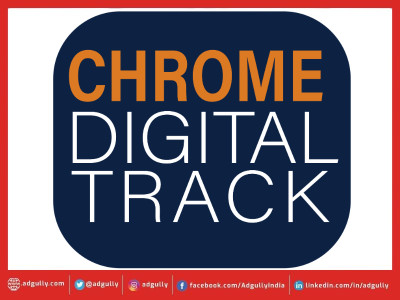


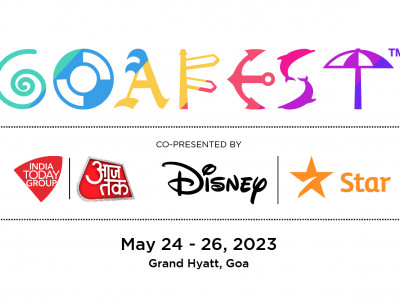

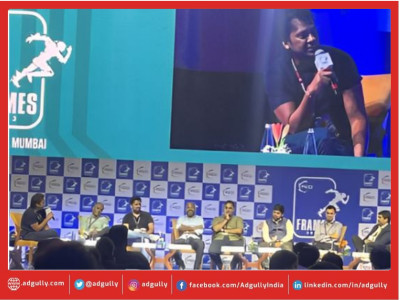

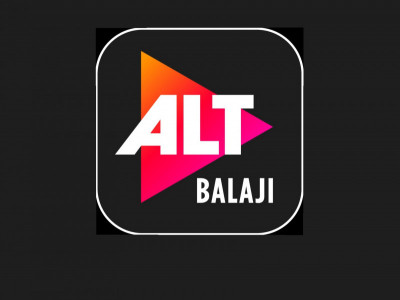
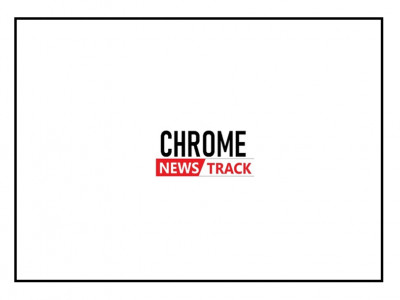



Share
Facebook
YouTube
Tweet
Twitter
LinkedIn